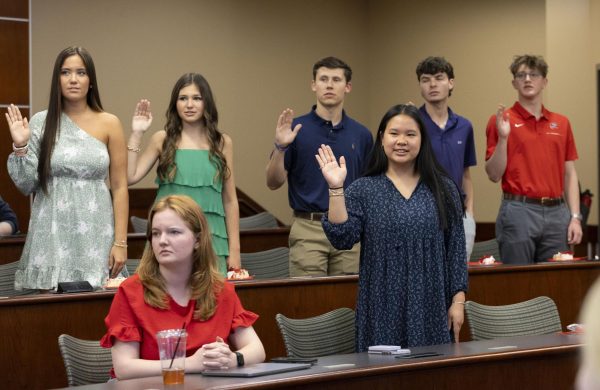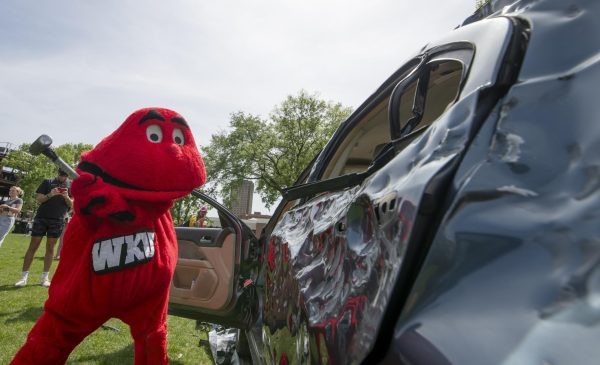Hope for Haiti gallery features professor’s work
April 5, 2013
A new gallery showing has opened in the Mass Media building, this time highlighting a current struggle and triumph, instead of a historical struggle from America’s past like the Civil War gallery.
“Hope for Haiti” had a soft opening this week. The gallery tells a story in stills of a country still burdened by much, including the earthquake in 2010, but with hope for a new and better tomorrow.
James Kenney, a photo professor, took the photos on his sabbatical to Haiti last spring.
“I proposed several projects that I might be doing, and the major project that I proposed was on women suffering from VVF (Vesicovaginal fistula), which is a condition that comes about when women either have babies early in life… or some sort of botched operation relating to child birth,” he said. “They’ve really become outcasts in society.”
Having done a similar project on this in Nigeria, he was asked to do it again in Haiti. While there, he did video work for this project, but also took many photographs that tackled a different issue: hope.
“Even though I was doing a video project, my roots are in still photography,” he said. “I’m not going to go to Haiti and not make still photographs. Everything that I had heard about the earthquake was still very palpable there. Even just two years after the earthquake, the tent cities were still there.”
Tim Broekema, another photo professor, worked to take down the old photos from the previous gallery, which have been sold to the history department, and put up Kenney’s photos.
He saw importance in highlighting the work of a faculty member, as well as the work of the past and work of future photojournalists.
“The gallery should be diverse,” he said. “[Kenney’s] images are compelling and phenomenal.”
Kenney commended his fellow faculty member on the work and time he put into this gallery, and others of the year.
The show will last three weeks, and be followed by a senior showcase.
“Visible effects of the earthquake were everywhere, some obvious and some not so obvious,” Kenney said. “The pictures kind of evolved into that, even though there was this destruction, which is more obvious, the people that were still struggling had to move on. They’re still trying to make due and trying to overcome. In the end, that’s where I wanted this exhibit to go, more towards the hope, rather than the destruction. There’s evidence of that in the exhibit, but I’m hoping there’s evidence of hope as well.”





















![Students cheer for Senator at Large Jaden Marshall after being announced as the Intercultural Student Engagement Center Senator for the 24th Senate on Wednesday, April 17 in the Senate Chamber in DSU. Ive done everything in my power, Ive said it 100 times, to be for the students, Marshall said. So, not only to win, but to hear that reaction for me by the other students is just something that shows people actually care about me [and] really support me.](https://wkuherald.com/wp-content/uploads/2024/04/jadenmarshall-600x422.jpg)

